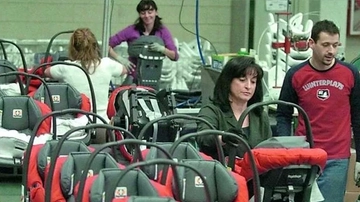Lombardy's unemployment benefits are rising: Lodi and Cremona are booming, Brescia is struggling. Only Milan is holding up.

Milan, July 31, 2025 – Employment: Lombardy faces a crisis. In the first half of 2025, corporate crises are on the rise, and consequently, the use of redundancy funds is on the rise.
From January to the end of June, the hours of authorized redundancy payments in Lombardy increased by 17.9% , exceeding 56 million hours. Nationally, the increase was 21.8%, a figure that, however, is not enough to provide comfort here, in what has always been the "engine of the country," despite numerous contradictions.
Just as the substantial stability of Milan is not enough , where we are witnessing – in contrast to the trend – a reduction in the use of “cash”, given that the economy in Lombardy is far from being “Milan-centric”, having always been based on the propulsive energy of widespread and rooted districts throughout the territory.
The numbersThe second UIL Lombardia 2025 Report on temporary layoffs depicts a production system under pressure , even before the full effects of international tariffs and geopolitical tensions have become apparent. "Our concern is well-founded," states UIL Lombardia confederal secretary Salvatore Monteduro, "because already today, with the economy worsening but not yet affected by the effects of the global trade war, we are seeing an increase in both the hours of temporary layoffs and the number of workers affected. The situation risks worsening if we don't act now ."
Milan bucks the trend, with a 17.5% reduction in authorized hours, but remains an exception. In the other Lombardy provinces, unemployment benefits are growing everywhere, with data indicating a widespread crisis. Lodi : +156.5% - the province with the highest increase. Cremona : +80.5% - doubling unemployment benefits in six months. Brescia : +45.8% - returning to critical post-Covid levels. Sondrio (+39.0%), Lecco (+27.8%), and Monza Brianza (+29.7%) are showing growing tensions. Mantua (-2.1%) and Varese (-5.0% ) are the only provinces to decline, but their levels are still high.
The concernsIs the difficult international economic climate, between the effects of conflicts and tariffs, to blame? It doesn't seem so, at least according to the unions. "This isn't an isolated economic problem," adds Monteduro, "but a widespread crisis, affecting the manufacturing and mechanical sectors , micro-businesses, artisans, and increasingly, even trade ."
One of the most worrying signs of the report concerns the increase in hours of redundancy payments in the retail sector , which in Lombardy marks a +41.2% compared to 2024. At the same time, the hours authorized by solidarity funds, used mainly in the tertiary and service sectors, are also increasing.
"If trade is in crisis, it means that families are giving up on purchases. The decline in consumption is the clearest indicator of social distress . Poor employment and the loss of purchasing power are becoming the real problem for Lombardy's economy. We once again call," Monteduro concludes, "for the immediate activation of permanent local observatories on corporate crises and employment dynamics, and for targeted intervention to support workers' purchasing power. Without decent wages, no recovery is possible . We need a response that doesn't just consist of safety nets, but of investment, training, bargaining, and redistributive policies. Crises must be managed before they explode."
Il Giorno






